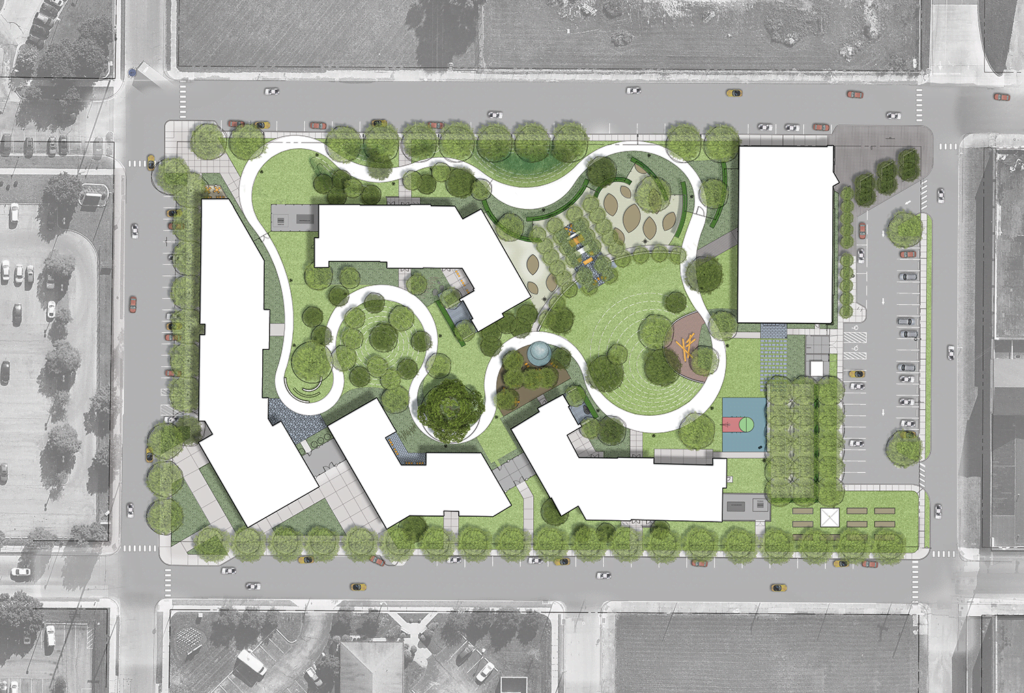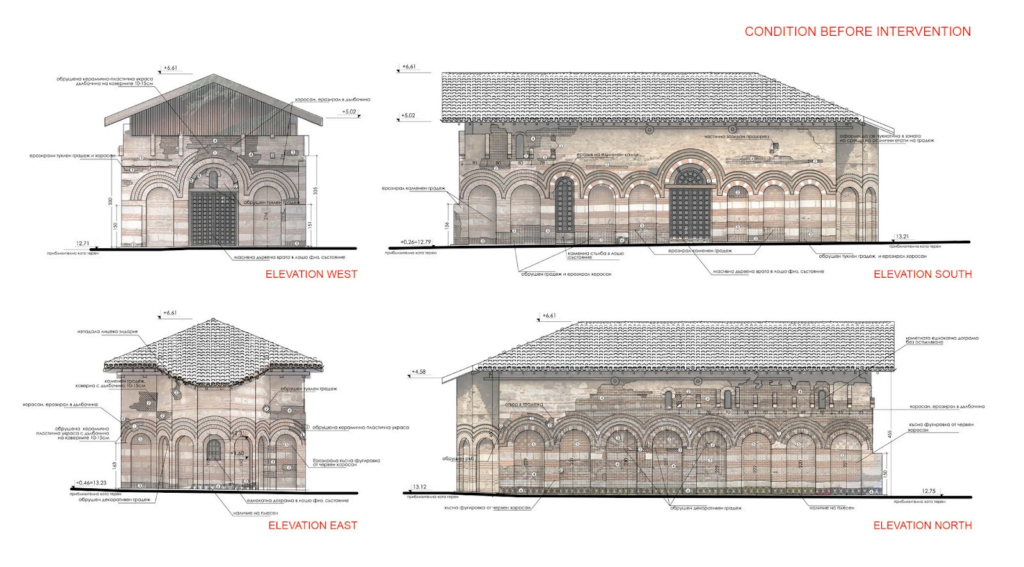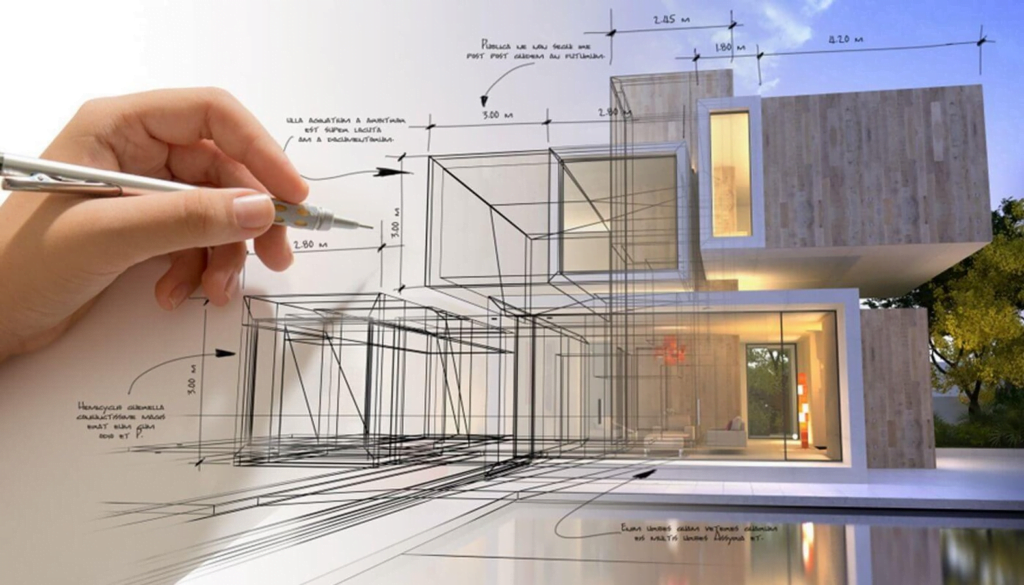Attending architecture school is a demanding procedure. The architectural practice appears to be the only choice for a resentful fresher caught between the whelms of its pleasant but routine profession and impassioned calling toward their quest for creativity. Architecture is similarly not limited to any one role, just as creativity is not. Design, art, presentation, communication, and other elements are all combined in architecture. In the demanding five years, it takes to get an architecture degree, one learns many abilities.
It is a field that requires creativity, problem-solving skills, attention to detail, and a deep understanding of engineering, science, and technology. Architects design buildings, structures, and spaces that meet specific needs while creating aesthetically pleasing environments – however, not all architecture graduates choose to pursue careers in the field. Many pursue alternative careers that draw on the skills and knowledge gained during their studies.
With these abilities, architects can pursue a wide range of careers in areas such as journalism, photography, art, graphics, communications, heritage, urban development, project management, etc. And with the growing innovation in these architectural designs. Making the appropriate choices might be a very beneficial investment for future career life. Here are several employment alternatives available to anyone with an Architecture Degree, without architecture, of course.
Table of Contents
Employment alternatives
A Career in Urban Planning
Pursuing urban planning after completing a Bachelor of Architecture opens up a world of possibilities in shaping the cities of tomorrow. With a strong foundation in design and spatial understanding, architects possess a unique perspective that allows them to address complex urban challenges. By delving into urban planning, architects can expand their skill set and contribute to creating sustainable, inclusive, and thriving communities.
They can engage in comprehensive city planning, analyzing existing infrastructures, developing transportation systems, designing public spaces, and considering environmental impacts. This interdisciplinary approach empowers architects to envision holistic solutions that harmonize functionality, aesthetics, and social considerations, making them essential agents in building better cities for future generations.

Landscape Architecture
Landscape architecture brings exciting avenues for architects to engage with the natural environment and shape outdoor spaces. As green open spaces provide refreshing recreational areas to any metropolitan fabric, their relevance is growing by the day. Using landscape design, architects may create a healthy social and sustainable equilibrium in any urban fabric. By delving into landscape architecture, architects can explore the integration of buildings with the surrounding environment, incorporating elements such as green spaces, water features, and ecological considerations.
They can contribute to the design of parks, gardens, public plazas, and urban landscapes, focusing on enhancing aesthetics, functionality, and ecological balance. With their understanding of site analysis, materiality, and construction methods, architects-turned-landscape architects can create transformative outdoor spaces that promote human well-being and foster a strong connection between people and nature.

Extreme Architecture
An extreme architect specializes in the design of structures for extreme weather conditions. With our climate changing at such a rapid and unpredictable rate, the significance of this profession grows over time. This discipline seeks adaptive design solutions for natural disaster problems such as periodic flooding or heat waves, as well as extreme climate conditions such as deserts or cold places.
Pursuing extreme architecture offers architects a thrilling and boundary-pushing avenue to explore the limits of design and construction. It involves creating structures that defy convention and challenge traditional notions of architecture. Architects in this field push the boundaries of creativity, incorporating unconventional materials, innovative technologies, and audacious forms into their designs. Extreme architecture encompasses projects such as futuristic skyscrapers, avant-garde installations, and structures in extreme environments like mountains or underwater.
It requires architects to think outside the box, considering factors such as structural integrity, sustainability, and the integration of advanced engineering principles. Pursuing extreme architecture allows architects to leave an indelible mark on the built environment, creating iconic and awe-inspiring structures that captivate the imagination and push the boundaries of what is possible in architectural design.

Real Estate Development
Working in real estate development offers architects a dynamic and multifaceted career path. With a deep understanding of design principles and spatial organization, architects bring invaluable expertise to the realm of real estate development. They can play a pivotal role in shaping and transforming urban landscapes through the creation of innovative and sustainable buildings. Architects in real estate development collaborate with various stakeholders, including investors, designers, engineers, and local communities, to bring visionary projects to life.
They contribute to site selection, feasibility studies, zoning regulations, and construction management, ensuring that the built environment meets both aesthetic and functional requirements. By leveraging their architectural background, these professionals have the opportunity to create impactful and enduring spaces that enhance the quality of life for residents and contribute to the vibrancy of communities.

Construction Management
Construction management offers a unique avenue to apply architectural skills and knowledge in a hands-on and practical manner. With a solid foundation in design and construction principles, architects possess a comprehensive understanding of the building process from inception to completion. As construction managers, architects can oversee and coordinate all aspects of the construction project, ensuring adherence to timelines, budgets, and quality standards.
They bridge the gap between the design team and construction crew, effectively communicating design intent and resolving any on-site challenges that may arise. Architects in construction management play a crucial role in maintaining the integrity of the design, ensuring that it is translated accurately and efficiently into a built reality. Their ability to navigate complex construction processes and their attention to detail make them invaluable assets in delivering successful and visually stunning projects.

Project management
Project management also opens up diverse career opportunities for architects. With a strong understanding of design, problem-solving, and space arrangements, architects are quite well-equipped to excel in project management roles. Architects-turned-project managers bring a unique perspective to the table, as they are able to possess a deep foundation of the entire construction process, from concept development to implementation. They can effectively communicate with clients, stakeholders, and interdisciplinary teams, ensuring that project goals, timelines, and budgets are met.
Their attention to detail, organizational skills, and ability to manage multiple tasks make them adept at overseeing complex projects and coordinating various professionals involved. Architects in project management roles play a crucial role in driving collaboration, mitigating risks, and ensuring the successful completion of projects while upholding design integrity. Their holistic approach and a keen eye for design details make them valuable assets in achieving project success.

BIM Management
Selecting BIM (Building Information Modeling) management as a career choice after architecture offers architects the opportunity to leverage their design expertise while embracing cutting-edge technology in the construction industry. BIM management involves overseeing the implementation and coordination of BIM processes and tools throughout the project lifecycle. As BIM managers, architects play a critical role in facilitating collaboration among multidisciplinary teams, streamlining workflows, and ensuring the accurate and efficient exchange of project information.
They act as the bridge between design professionals, contractors, and stakeholders, utilizing their architectural knowledge to effectively manage the digital representation of the building. By embracing BIM, architects can enhance project coordination, reduce errors, improve efficiency, and ultimately contribute to the successful delivery of complex construction projects. BIM management provides architects with a unique career path that combines their design skills with technology, enabling them to shape the future of the industry and be at the forefront of innovation.

Interior Design
Interior designing offers architects a rewarding and complementary career path that allows them to focus on the detailed and experiential aspects of spaces. Architects can immerse themselves in the art of creating functional, aesthetically pleasing, and personalized interior spaces. They can apply their expertise in materials, lighting, colors, and textures to enhance the atmosphere and user experience within buildings. Architects in interior design roles have the opportunity to collaborate closely with clients, understanding their needs, and translating them into tangible design solutions.
Their understanding of structural and technical considerations allows them to seamlessly integrate interior elements into the overall architectural design. Pursuing interior design after architecture allows architects to create captivating and harmonious interiors that leave a lasting impact on the people who inhabit those spaces.

Lighting Consultant
Working as a lighting consultant after a career in architecture offers architects the opportunity to specialize in creating impactful and innovative lighting solutions. They can collaborate with clients, designers, and engineers to develop lighting strategies that enhance the functionality, ambiance, and energy efficiency of spaces. Lighting consultants with an architectural background can seamlessly integrate lighting design into the overall building design, considering factors such as natural light, artificial lighting systems, and the desired mood and functionality of each space.
They can employ their knowledge of materials, technology, and lighting techniques to create visually stunning and well-lit environments. Working as a lighting consultant allows architects to play a crucial role in shaping the atmosphere, visual experience, and overall quality of indoor and outdoor spaces through the power of light.

Furniture Design: Furniture designing after a career in architecture allows architects to explore the intersection of form, function, and craftsmanship on a smaller scale. Architects can focus on creating unique and innovative furniture pieces that complement and enhance the built environment. Along with their knowledge of design principles, spatial organization, and materials, they can also apply their knowledge of ergonomics, user experience, and sustainability to design furniture that is not only aesthetically pleasing but also functional and comfortable.
Architects-turned-furniture designers have the opportunity to experiment with different materials, textures, and construction techniques, pushing the boundaries of creativity and craftsmanship. Working in furniture design allows architects to express their design sensibilities on a more intimate and tangible level, creating bespoke pieces that bring joy and functionality to people’s lives within the spaces they inhabit.

FURNITURE DESIGN BY SHITIJ DOGRA ARCHITECTS
Graphic Design: After completing a degree in architecture, many individuals find themselves drawn toward the captivating world of graphic design. Building upon their foundational understanding of form, composition, and spatial relationships, architects-turned-graphic designers bring a unique perspective to their work. They possess a keen eye for aesthetics and a deep appreciation for visual storytelling. Through the fusion of their architectural background and design expertise, they create visually stunning graphics, logos, illustrations, and user interfaces.
Their ability to balance functionality and creativity allows them to craft compelling visual experiences that communicate messages effectively. With their strong attention to detail, technical skills, and creative problem-solving abilities, these multi-talented professionals make valuable contributions to the realm of graphic design.

Product Design: Pursuing product design after architecture offers a dynamic and rewarding career path that allows architects to explore their creativity in new dimensions. While architecture focuses on designing spaces and structures on a larger scale, product design delves into the intricate details of objects and how they interact with users. Transitioning into product design allows architects to apply their design thinking, problem-solving skills, and understanding of human behavior to create functional and aesthetically pleasing products.
It opens up opportunities to work with a diverse range of industries, such as furniture, consumer electronics, and industrial equipment, and provides a chance to make a tangible impact on people’s daily lives. The fusion of architectural knowledge with product design expertise results in innovative and user-centric solutions that bridge the gap between physical spaces and the objects within them.

PRODUCT DESIGN: iCREATION WIFI VIDEO DOORBELL
Production and Set design
Production and set design are creative and technical processes that involve designing and constructing the physical environment for various forms of media, such as film, television, theater, and events. Transitioning from architecture to production and set design can be a natural progression for those with a background in architecture. Architects possess a unique skill set that can be effectively applied to the world of production and set design. Their understanding of spatial planning, structural integrity, and aesthetic principles can greatly enhance the design process.
Architects bring meticulous attention to detail and a strong sense of composition, ensuring that the sets not only fulfill their functional requirements but also contribute to the visual storytelling of the production. With their ability to conceptualize and visualize spaces, architects can create immersive and captivating environments that seamlessly integrate with the overall production. Whether it’s adapting existing architectural designs or designing custom sets from scratch, architects can bring a fresh perspective and innovative approach to production and set design, resulting in visually striking and well-crafted sets that enhance the overall experience for audiences.

Architectural Writing and Journalism
Pursuing a career in architectural writing and journalism after completing a Bachelor’s degree in architecture can be an exciting and fulfilling path for those with a passion for both design and communication. Along with a solid understanding of architecture, individuals are equipped with in-depth knowledge of the field, including architectural history, theory, and design principles. This expertise can be translated into engaging and informative content that educates and inspires readers about the built environment. Architectural writers and journalists have the opportunity to explore a wide range of topics, including architectural trends, sustainable design, urban planning, and the cultural significance of buildings. T
Through their writing, they can share their insights, critique projects, and analyze the impact of architecture on society. By effectively communicating complex architectural concepts to a broader audience, architectural writers and journalists play a vital role in fostering a deeper appreciation and understanding of the built environment, while also contributing to the dialogue and discourse surrounding architecture and design.

Architectural Photography
Architectural photography is a captivating endeavor that captures the essence, beauty, and intricacies of the built environment. It is a meticulous art form that combines technical expertise with a keen eye for composition and detail. Architectural photographers have the unique ability to showcase the harmony between design, space, and light, transforming buildings into visual narratives. They skillfully play with angles, lines, textures, and perspectives to convey the personality and character of each structure.
Through their lenses, they not only document the physical form of architecture but also evoke emotions, tell stories, and evoke a sense of awe and admiration. Architectural photography is a celebration of the creativity and innovation of architects and serves as a powerful medium to inspire and appreciate the profound impact of architecture on our lives.

Architectural historian
After completing a bachelor’s degree in architecture, pursuing architectural history as a specialization offers a fascinating and rewarding career path. Exploring architectural history allows professionals to analyze and appreciate the influences, styles, and innovations that have shaped the built environment over centuries. It involves studying iconic landmarks, significant architectural movements, and the works of renowned architects.
Engaging with architectural history not only deepens one’s knowledge but also enhances their ability to design with an informed perspective, considering both contemporary and historical influences. With a specialization in architectural history, one can contribute to preserving and conserving architectural heritage, conducting research, curating exhibitions, teaching, or working in museums, architectural firms, or heritage organizations. Ultimately, the pursuit of architectural history after a bachelor’s degree opens up a world of possibilities for those passionate about understanding and celebrating the rich tapestry of architectural heritage.

Restoration/ Conservation Architecture
Engaging in restoration and conservation architecture is an endeavor that embraces the preservation and revival of architectural heritage. It is a passionate commitment to safeguarding our cultural and historical legacy for future generations. By embarking on restoration projects, we embark on a journey that involves meticulous research, a deep understanding of architectural styles, and a reverence for the original design intent. Restoration architects are entrusted with the task of breathing new life into old structures, rejuvenating their splendor while adhering to conservation principles.
They delicately balance the preservation of original elements with the incorporation of modern amenities, ensuring that the essence of the past harmoniously coexists with the needs of the present. The pursuit of restoration and conservation architecture is not merely an architectural exercise, but a profound act of storytelling, as it encapsulates the tales of our ancestors, celebrating their vision and ingenuity.

Archivist
Switching from architecture to becoming an archivist opens up a new realm of preserving and organizing historical records and documents. As an archivist, one embraces the responsibility of safeguarding valuable archival material, including architectural drawings, blueprints, and historical documents. It is a profession that requires attention to detail, a deep appreciation for history, and a commitment to maintaining the integrity and accessibility of archival collections.
Archivists meticulously catalog and curate these materials, ensuring their proper preservation and organization. They become custodians of architectural history, connecting the past with the present and enabling future generations to delve into the architectural heritage of a place. This transition allows architects to continue their passion for preserving the built environment in a different capacity, contributing to the collective memory and knowledge of architecture.

Research Architecture
Doing research in architecture entails a thorough and methodical examination of numerous aspects of the built environment. It starts with defining the research question or purpose, which could be anything from investigating the historical relevance of a specific architectural style to analyzing the impact of sustainable design practices. Extensive literature reviews, examination of existing ideas and approaches, and critical evaluation of pertinent case studies are frequently part of the process.
Architects undertaking research may use a variety of methods, including qualitative and quantitative analyses, questionnaires, interviews, and site visits. Researchers gain insights into architectural philosophy, novel construction processes, emerging technology, and societal requirements as a result of this thorough examination. The findings of architectural research not only add to the body of knowledge on the subject but also aid to inform the design process.

Academia
Choosing an academic career after obtaining a Bachelor’s degree in Architecture can be an enriching and rewarding path for individuals passionate about research, teaching, and contributing to the field’s advancement. Pursuing an academic career allows architects to delve deeper into their areas of interest, explore new ideas, and share their knowledge and expertise with aspiring architects. It often involves pursuing advanced degrees such as a Master’s or Doctorate in Architecture, which provide specialized knowledge and research opportunities.
Academia offers a platform to engage in critical discourse, collaborate with fellow scholars and professionals, and publish research papers to contribute to the broader architectural community. By becoming educators, architects have the chance to shape the future generation of architects, inspire creativity, and instill a strong understanding of architectural principles and practices. Moreover, academic careers provide opportunities for continuous learning, professional growth, and the exploration of interdisciplinary collaborations.

PROFESSOR TEACHING IN URBAN DESIGN STUDIO
In conclusion, the world of architecture offers architects a wealth of opportunities beyond traditional architectural practice. As explored in this article, post-architecture careers provide a platform for architects to leverage their skills, knowledge, and creativity in diverse ways. Whether it involves branching out into related fields like urban planning, interior design, or construction management, or venturing into entirely different industries such as technology, sustainability, or even entrepreneurship, architects possess a valuable skill set that can be applied in various domains.
While transitioning to a different career path may require additional education, training, or networking, architects are well-equipped to adapt and excel in new domains. Embracing change and being open to exploring non-traditional career paths can lead to exciting opportunities for personal and professional growth. It is essential for architects to actively seek out resources, networks, and mentorship programs that support their career transitions.
Building a strong professional network and staying connected to the architecture community can provide invaluable guidance and support throughout the journey. By embracing the versatility and adaptability of their expertise, architects can chart new career paths that not only fulfill their professional aspirations but also allow them to make a meaningful impact on the world around them. The possibilities are endless, and with the right mindset and determination, architects can embark on rewarding journeys that redefine their careers and contribute to the advancement of society.




